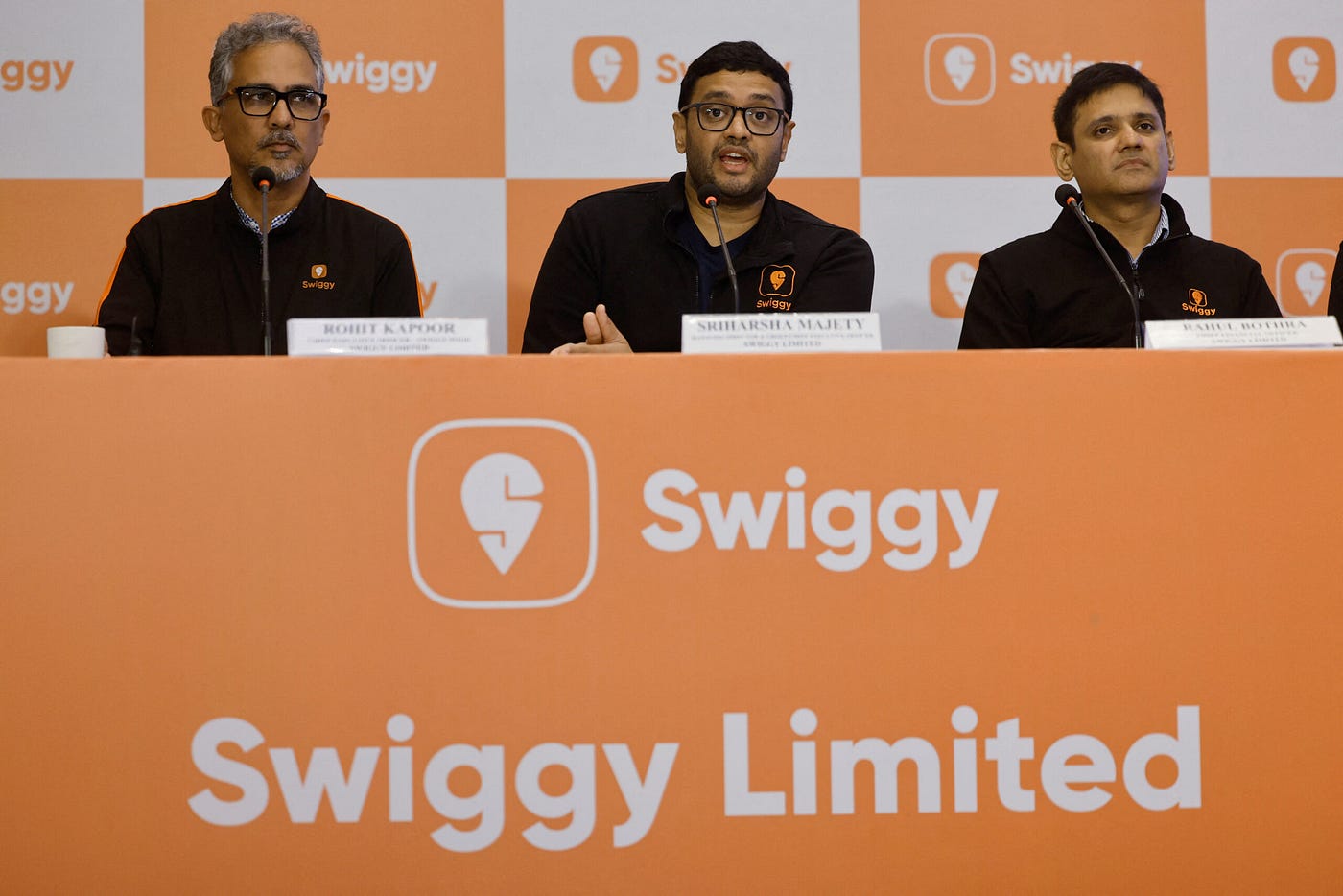Shares of Swiggy jumped 7% to 440 rupees on Wednesday, signaling a strong public debut for India’s food and quick commerce giant and marking the nation’s second-largest IPO of the year. This initial listing of the 10-year-old company, headquartered in Bengaluru, has set Swiggy up for direct comparisons with Zomato, long regarded as India’s internet stock benchmark in the sector. Valued at $11.3 billion ahead of the IPO, Swiggy’s market cap quickly rose to $11.6 billion following the debut, a conservative valuation compared to Zomato’s $29 billion.
The public listing serves as a significant liquidity event for Swiggy’s investors, including major backers Prosus, SoftBank, and Accel. Prosus alone has seen its stake in Swiggy rise to a paper return of $2 billion, while the company’s 5,000 employees stand to collectively earn about $1 billion in newly created wealth. Swiggy co-founder and CEO Sriharsha Majety remarked on the broader economic potential in India over the next two decades, suggesting this debut arrives amid a time of heightened national growth and optimism.
Swiggy, now India’s second-largest food delivery provider with 14 million monthly users, trails Zomato across various performance indicators. Macquarie research reports that Swiggy’s gross order value, estimated at $3.3 billion annually, lags Zomato’s by roughly 25%. Swiggy’s quick commerce arm, Instamart, similarly ranks below Zomato’s Blinkit in both user numbers and financial health. While Blinkit has achieved adjusted EBITDA breakeven, Instamart remains unprofitable even at the contribution margin level, prompting JMFinancial analysts to suggest lower target valuations for Swiggy’s segments due to previous execution challenges.
However, industry projections highlight the growth potential of India’s quick commerce market, which Morgan Stanley predicts could reach $42 billion by 2030, comprising over 18% of India’s total e-commerce. Quick commerce, with a 77% annual growth rate, now accounts for 56% of online grocery delivery, outpacing traditional retail’s 14% growth. Yet, traditional giants such as Flipkart and JioMart are joining the rapid delivery space, increasing competition, while logistical challenges remain concerning as this model expands beyond urban centers.
Featured image courtesy of Medium







Leave a Reply